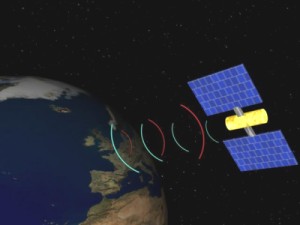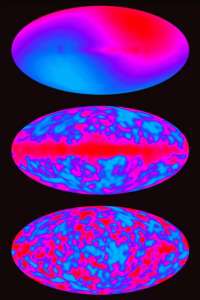


Radio waves have the longest wavelengths of all electromagnetic waves. This region of the electromagneti8c spectrum is utilised by communications devices such as those used on satellites to communicate with Earth. Radio waves are ideal for communication because they have long wavelengths that are able to pass through the Earth's atmosphere into space, and also they can bend around obstacles such as hills.
The radio region is finite in extent and it is used for the communication to and from hundreds of satellites, plus for commercial radio stations, television broadcasts etc. Because of this the region is split further into a number of bands so it is easier to allocate frequencies :
| BAND | Frequency range |
| VLF | 3 - 30 KHz |
| LF | 30 - 300 KHz |
| MF | 300 - 3000 KHz |
| HF | 3 - 30 MHz |
| VHF | 30 - 300 MHz |
| UHF | 300 - 3000 MHz |
| SHF | 3 - 30 GHz |
| EHF | 30 - 300 GHz |
As you have probably guessed, XMM uses radio waves to transmit data and images back to Earth, and people on Earth can communicate with XMM the same way.

This image demonstrates a satellite communicating with people on Earth
Microwave region
This region has slightly shorter waves than those in the radio region. They are used in microwave ovens, radar, and also in communications.

A conventional microwave oven uses microwaves tuned to a certain frequency to heat our food.
In 1965 two scientists, Arno Penzias and Robert Wilson, working at the Horned antenna at Crawford Hill, New Jersey, discovered an unexpected background noise whilst detecting radio waves from the galactic centre. As it turned out this discovery was of great cosmological importance as they had stumbled upon the Cosmic microwave Background (CMB). This is the echo of the radiation left over from the big bang.

The top image here shows the view of the CMB from Earth without any correction. It shows a dipole effect which is due to the motion of the Earth around the Sun and galactic centre. The second image shows the view with this dipole subtracted. The problem is that you get a lot of emission from the plane of the Milky Way, shown as a band across the middle of the image. The third image shows the view of the CMB with the effect from the Milky Way removed.
|
|
|

